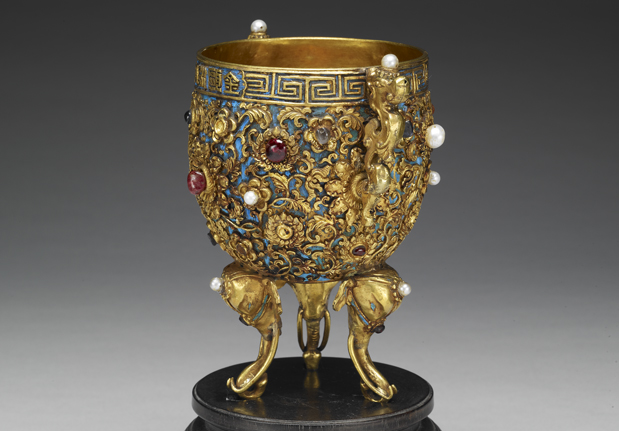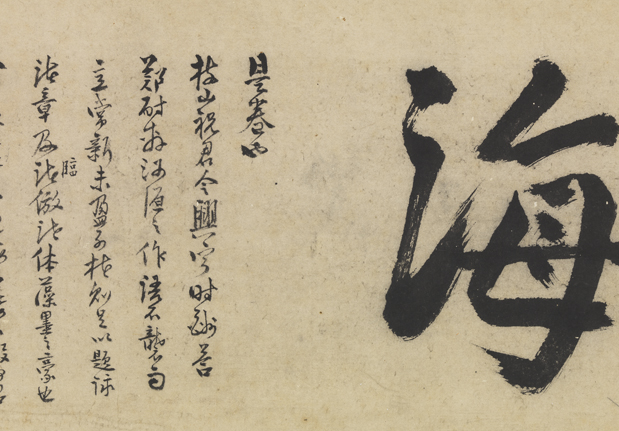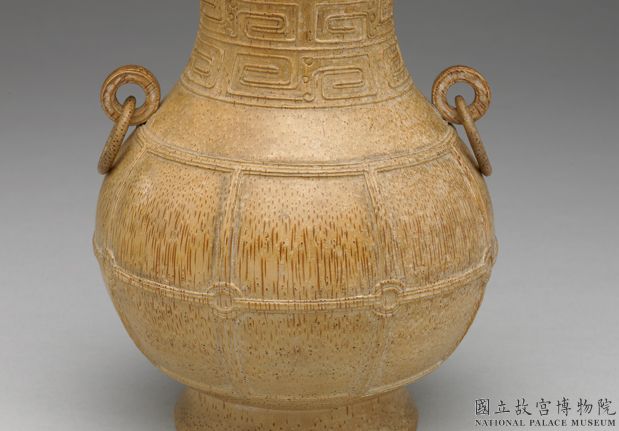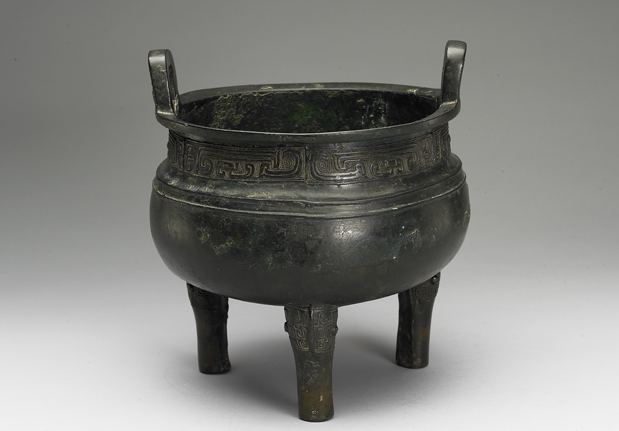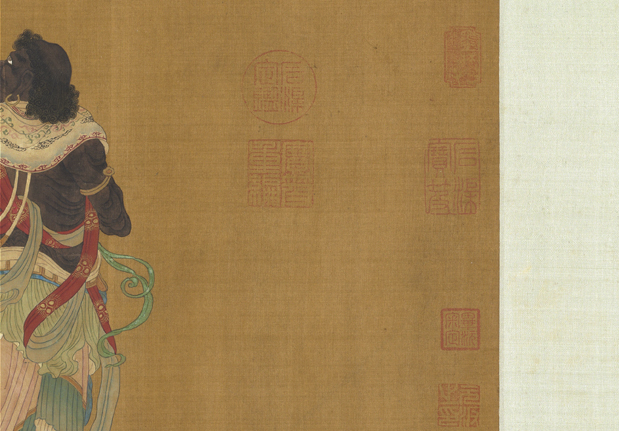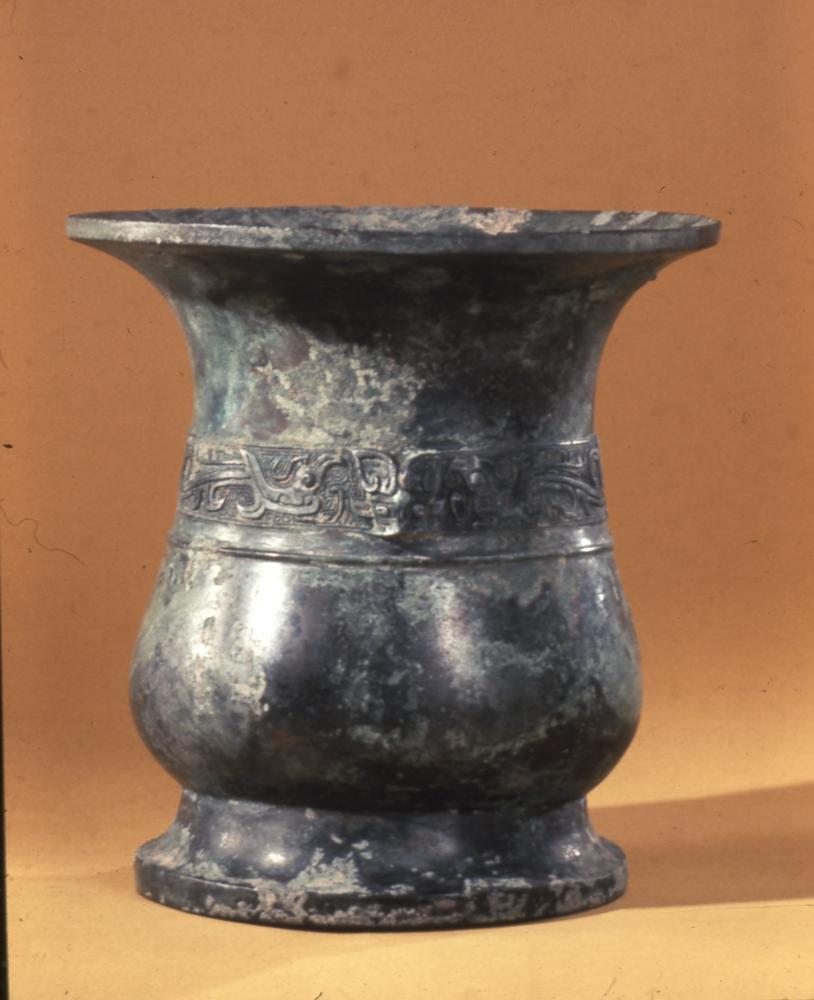Period:Yuan dynasty Production date:1330-1368 (circa)
Materials:porcelain
Technique:glazed, underglazed,
Subjects:plant fish lotus
Dimensions:Diameter: 47.10 centimetres Height: 8.20 centimetres Weight: 4.10 kilograms
Description:
Large serving dish with bracket-lobed edge painted in underglaze blue. This magnificent heavily potted large serving dish has rounded sides and a flattened upturned rim with a thickened bracket-lobed edge. Inside it is painted with a mandarin fish surrounded by ferns and water weeds in underglaze blue. In the cavetto a formal lotus scroll is depicted and there is a cross-diaper border around the rim. The base is unglazed and has fired pinkish-white.
IMG
![图片[1]-dish BM-1968-0422.26-China Archive](https://chinaarchive.net/Yuan dynasty/Ceramics/mid_00030608_001.jpg)
![图片[2]-dish BM-1968-0422.26-China Archive](https://chinaarchive.net/Yuan dynasty/Ceramics/mid_00507662_001.jpg)
Comments:Harrison-Hall 2001:The Chinese word for fish, 鱼 yu, and the word for abundance or surplus, 余 yu, have the same sound and thus the fish is a rebus for wealth and prosperity. This design was also used for dishes with a smooth rim. For example, two related dishes without the bracket-lobed rim are in the Ardebil shrine. Another is in the Metropolitan Museum of Art, New York. Dishes of this type were exported to India as well as the Middle East. Shards from dishes with minor variations in the design were excavated at a palace complex, Kotla Firuzshah, in Delhi, built in 1354 for Sultan Firuzshah Tughlaq and not lived in much after 1388; it was destroyed in 1398.
Materials:porcelain
Technique:glazed, underglazed,
Subjects:plant fish lotus
Dimensions:Diameter: 47.10 centimetres Height: 8.20 centimetres Weight: 4.10 kilograms
Description:
Large serving dish with bracket-lobed edge painted in underglaze blue. This magnificent heavily potted large serving dish has rounded sides and a flattened upturned rim with a thickened bracket-lobed edge. Inside it is painted with a mandarin fish surrounded by ferns and water weeds in underglaze blue. In the cavetto a formal lotus scroll is depicted and there is a cross-diaper border around the rim. The base is unglazed and has fired pinkish-white.
IMG
![图片[1]-dish BM-1968-0422.26-China Archive](https://chinaarchive.net/Yuan dynasty/Ceramics/mid_00030608_001.jpg)
![图片[2]-dish BM-1968-0422.26-China Archive](https://chinaarchive.net/Yuan dynasty/Ceramics/mid_00507662_001.jpg)
Comments:Harrison-Hall 2001:The Chinese word for fish, 鱼 yu, and the word for abundance or surplus, 余 yu, have the same sound and thus the fish is a rebus for wealth and prosperity. This design was also used for dishes with a smooth rim. For example, two related dishes without the bracket-lobed rim are in the Ardebil shrine. Another is in the Metropolitan Museum of Art, New York. Dishes of this type were exported to India as well as the Middle East. Shards from dishes with minor variations in the design were excavated at a palace complex, Kotla Firuzshah, in Delhi, built in 1354 for Sultan Firuzshah Tughlaq and not lived in much after 1388; it was destroyed in 1398.
© Copyright
The copyright of the article belongs to the author, please keep the original link for reprinting.
THE END
